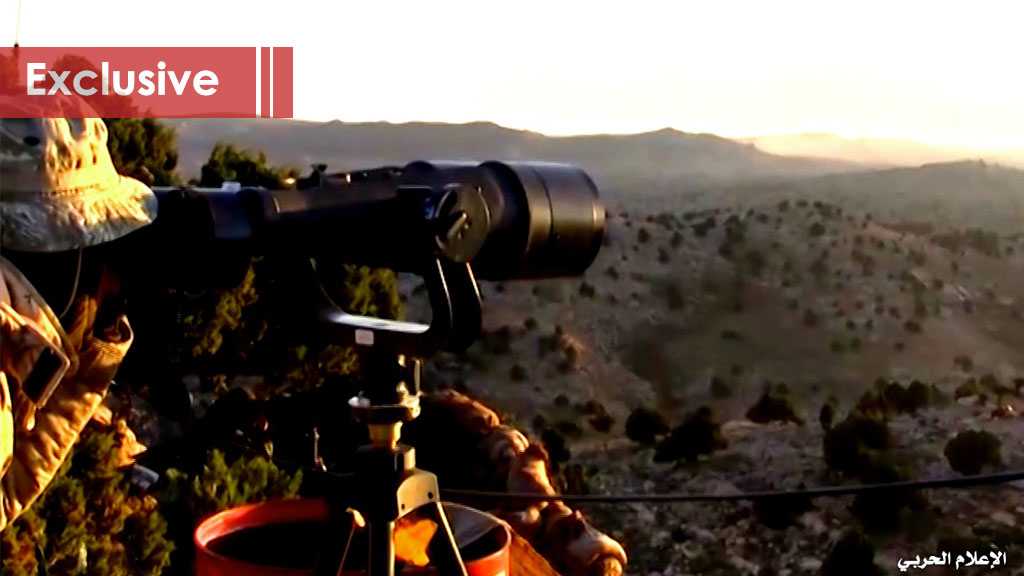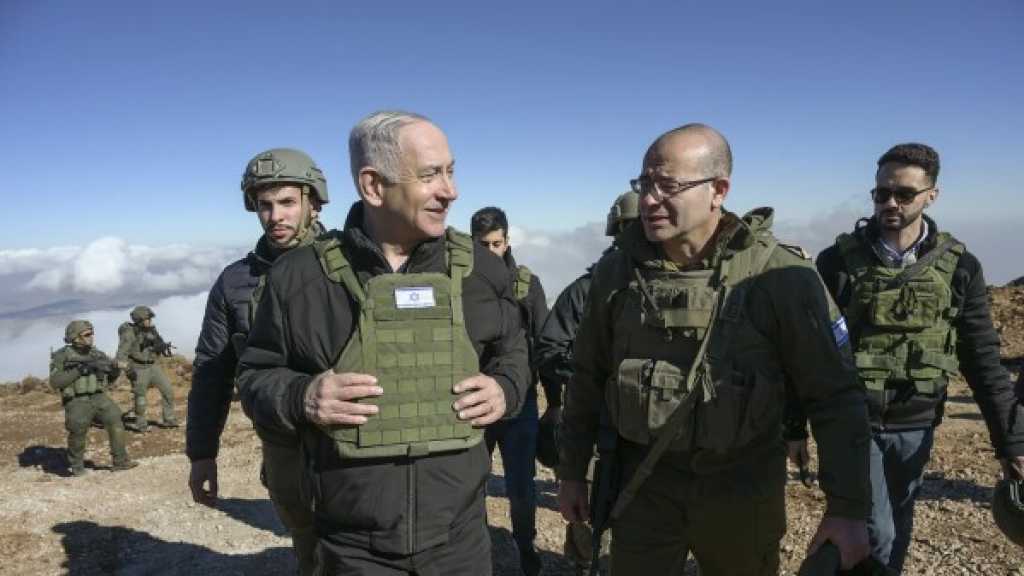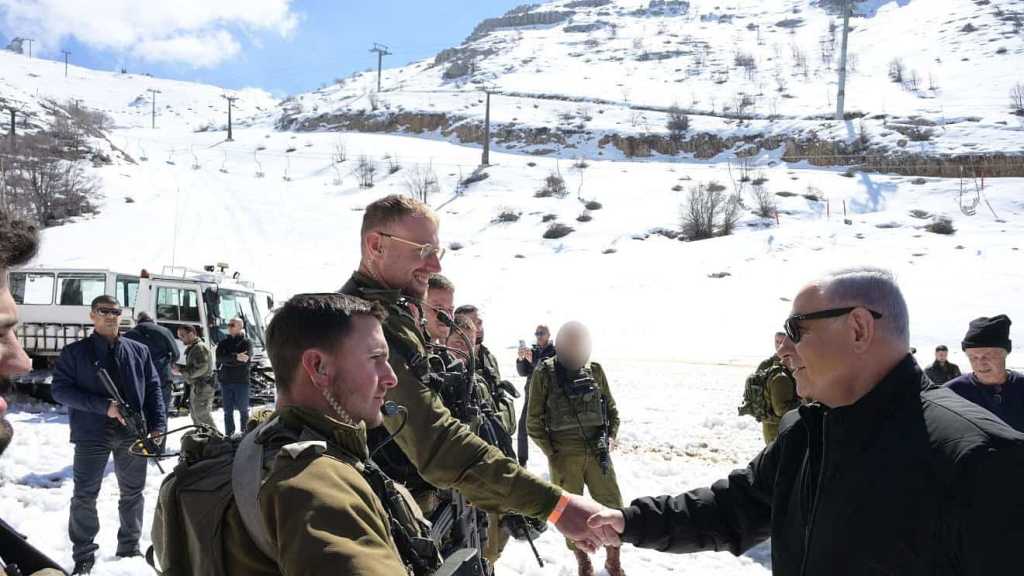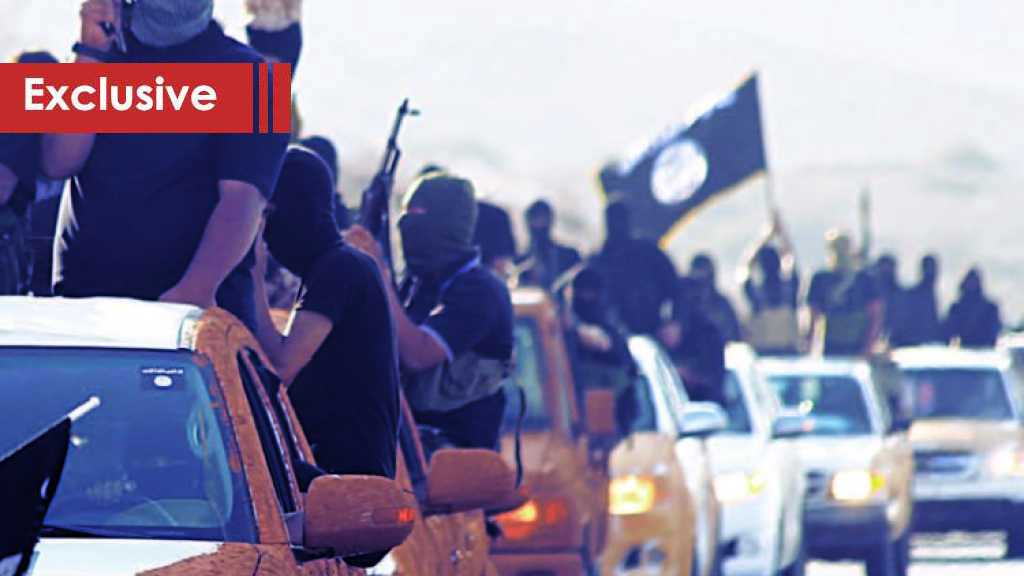
Lebanon’s 2nd Liberation: The Islamic Resistance Tells Al-Ahed the Whole Story – Part 2

Maysaa Moukaddem
On the second anniversary of the battle to liberate Lebanon’s Eastern Mountain Range from terrorists, the Islamic Resistance, for the first time, tells the full version of events to Al-Ahed News website. This includes military and field details.
It all began in 2012 starting from Tell Mando to al-Qusayr to the Jaroud. Al-Ahed will publish the story successively accompanied by special videos and maps in cooperation with the media wing of the Islamic Resistance.
In the second part, we share military details about Hezbollah’s capture of al-Qusayr and how His Eminence, the Secretary General of Hezbollah determined the direction of the attack on the city.
The Islamic Resistance ended the battle west of the river by destroying the militant objective of connecting with northern Lebanon and the project of isolating the Bekaa from Homs. But al-Qusayr remained the main logistical base for terrorist groups.
Before the battles of Tell Mando and al-Qusayr as well as the battles west of the river, the terrorists waged cross-border wars. They had begun launching attacks in a bid to seize control of the outlets leading to Syria. They started their movement towards the Jousiya border crossing. They seized area 14. Thus, this part of the border had to be recovered.
The Mujahideen of the Islamic Resistance carried out an attack on an area called Khirbet Jousiya and succeeded in recapturing it. In order for the Mujahideen to be able to defend the crossing, during the first offensive the brothers decided to continue onto the Jousiya area.
"The area east of the river had to be cleared in order to surround al-Qusayr from several sides."
Then the resistance attacked the area. "It was a night-time attack, a special operation similar to other operations carried out by the resistance. The mobilization forces [Ta’abia] took part in this operation."
In the Jousiya Operation, the deployment of the Syrian army was sporadic. Every point where the Syrian army deployed was considered by the resistance as a foothold from which to launch the operation. The Mujahideen carried out a second offensive, an attack east of the Assi River. The offensive targeted an area of approximately 120 km2, comprising a group of villages: Jousiya, Saidiya, Zarraa, Dothariya and al-Atefiyeh (at the beginning of the crisis in Syria, the militants entered al-Atifiyeh and massacred about 17 civilians). The resistance took advantage of the existing Syrian Arab Army deployment points and carried out an operation involving nearly 800 Mujahideen, including mobilization forces. The operation kicked off in several directions (what characterized the operation is that it was complex): from the east towards the west, from the south towards the north and a bypass in order to tighten the siege.
Technically, the battle started at 1PM. One resistance fighter was martyred. Before sunset, the offensive had almost achieved its objectives. On the second day, clearing the area as well as the bypass operation were completed. The resistance recovered a Syrian army tank captured by the militants. Interestingly, the shell was still unused in the recovered tank. This suggests that the terrorists had placed the shell in the tank gun but failed to use it because of the rapid advance of the Mujahideen.
One of the most important features of this process is the bypass maneuver. The resistance had set up a series of barriers. The terrorists began to escape to an area called Tell Hanash. "The terrorists left dozens of armored vehicles and fled. The resistance fighters were targeting them. The scene there was strange. There was a lightning storm, as if God Almighty was lobbing them away. The lightening came from the sky. It was strange when it hit the ground and the path the militants were on. The lightening was harder on the militants than the gunfire from the resistance.”
There was only one area left that needed to be cleared before the resistance reached the line of contact at al-Qusayr. That area extended from Dawthariyah to the water facility before al-Qusayr. The battle in this area lasted for two days. Four resistance fighters were martyred.
At the area housing the water facility and its surroundings, clashes took place on the last day. The enemy mobilized all its forces because the resistance was nearing al-Qusayr. There was chlorine in the water facility. One member of the enemy force was asked to booby trap the chlorine and blow himself up to kill as many members of the resistance as possible. But the Mujahideen killed him before he could reach the facility following close combat between him and the brothers.
Close combat between the resistance fighters and the militants continued in this area until the attack on al-Qusayr began.
* The breakdown of the number of clashes the resistance fought during the operation east of the river is as follows:
- Day 1: 46 regular clashes and one hard battle.
- Day 2: 6 regular clashes and 5 hard battles.
- Last day: 18 hard battles.
* The Characteristics of this operation:
- Speedy response by the formations
- Multiple maneuvers: During this operation we attacked on seven combat axes.
- Close combat and make the most of the flames.
- Taking advantage of bypass maneuvers that cut off roads and isolated militants, forcing them to escape before the siege was completed. "If the siege had been completed, the militants would have been suffocated. As such, we were done with the operation east of the river."
* Al-Qusayr: The Secretary General Resolves the Direction of the Attack
At this point discussions began on whether we should attack al-Qusayr and from what side.
After the leadership made the decision to attack al-Qusayr, discussions focused on the question: "Should we attack from the north, that is from Tell Mando Hill towards Arjoun, and from Arjun we would go around the al-Dabaa military Airbase and advance towards al-Qusayr? Or should we attack from the south, that is from where we came into contact with al-Qusayr and start our offensive from al-Mashtal Bridge?"
That's where the leadership came in. The Secretary General made the decision. Sayyed Hassan Nasrallah gave the order to attack from the south and not the north, from the contact points the Mujahideen reached with al-Qusayr.
During the battle of al-Qusayr, the resistance faced the most prominent combat formations that were active on the field, the so-called Syrian Revolution. There were conflicting reports about the number of militants there. But the lowest number reported was 6,000 fighters inside al-Qusayr with their weapons, materiel, tanks, and heavy machine guns.
The purpose of this battle was to eliminate the logistical base that fueled the Syrian Revolution and to force the enemy to change the way it worked. At that stage, the Daesh terror organization had not yet emerged. It was still part of the general framework of the so-called Syrian Revolution. Al-Nusra Front was present within al-Qusayr. But the most powerful formation was the Farouq Brigades, which was deployed throughout the Syrian territory. Back then the Farouk Brigades were in Idlib, Aleppo and Daraa. But its main foundation was mainly Homs and al-Qusayr (al-Qusayr was the headquarters of the Farouk Brigades).
The international cover and support the terrorists had in al-Qusayr was significant. All the main figures at the time spoke about the battle. The militants received media support and publicity from a large number of satellite and foreign channels.
The enemy had many points of strength: "a great banding of fighters in addition to their large numbers and formations, their seizure of many of the Syrian army’s weapons, in addition to the weapons that were reaching them." There, the militants had the most important individual weapons in the world, equipped with binoculars, tanks and mortars.” In addition, "the cornet was in their hands, and we saw the red arrow, which is a state-of-the art anti-armor weapon."
In general, there was a balance in the combat capabilities of the resistance and the terrorists, at the level of weapons quality. As for the number of boots on the ground, the resistance fighters were outnumbered. The number of militants was at least 6,000. The highest estimates put the number at 10,000. The formation of the resistance during the al-Qusayr offensive was as follows: 14 axes and 14 brigades. The main fighting force was only about 1,800 young men.
The operation in May 2013 was carried out in four stages. Each stage comprised of a day or more.
The first stage was completed on the first day. The Islamic Resistance attacked the city from several directions. There were several axes on each direction. The resistance had one bypass axis from the west and more than one axes along the south. On the eastern side, there was an axis to secure the south to the northeast and five axes from the west to the east, taking advantage of the Syrian army's positions.
The operation’s objective was to reach specific points. It achieved almost 70 percent of its objectives. On the first day, the resistance took control of 40 percent of al-Qusayr (from al-Omran) and was able to bring together the Syrian army's scattered formations in the heart of al-Qusayr. Resistance forces arrived from al-Mashtal to al-Qusayr and took control of the southeast neighborhood. The Mujahideen arrived close to the church and the municipality on the first day but did not hold their position for several reasons. A number of resistance fighters were martyred.
On the sixth day of the battle, very heavy fighting between the resistance and the enemy unfolded. The enemy had prepared its defensive measures. "We attacked all the points in al-Qusayr. Every room we entered, we were met with clashes. In some of the places we entered, we saw hot eggs and warm tea. Basically, they felt secure enough to fry eggs and make tea."
After the sixth day, resistance forces engaged in gnawing operations, while the other Mujahideen brothers prepared to carry out the last major attack. One of the advantages the enemy had was the magnitude of explosive devices. They also capitalized on the depth and width of the area through engineering work. In addition to the extent of the fortifications, "they were making the most of the land.”
As the tenth day of the battle approached, the militants outside of al-Qusayr tried to reinforce the city from the Qalamoun mountain range, i.e. from al-Aboudiyeh area. They crossed the Dohairij area and entered al-Qusayr from the rear. But the resistance clashed with the terrorists in al-Aboudiyeh area and forced them to retreat. Then they circled in from the Hassiyeh road on the highway and entered a-Qusayr from al-Dabaa. Among those sent with the reinforcement were Abdul Qadir Saleh and Abdul Jabbar al-Aqidi, who joined other militants in al-Qusayr. A formation, the Lions of the East Army [Jaysh Usud al-Sharqiya] arrived from Deir ez-Zor. Other formations arrived from Aleppo (about 300 gunmen). As the days passed, the brothers' performance was evolving and so were the tactics. For example, the resistance moved from "attacking from the street" to "breaching homes".
A crucial objective was mapped out: to reach the municipal area which includes the church, the municipality, al-Qusayr’s main square. This was the heart of al-Qusayr.
The gnawing operation (the third stage) lasted a long time. On the tenth day, the leadership in the resistance gave orders to conduct maneuvers from other directions.
The resistance fighters advanced towards the Dohairij area, going around any crossing that could lead to al-Qusayr. They closed the entire area to prevent any possible infiltration attempts into al-Qusayr. In addition, the National Defense in cooperation with the formations of the resistance began an offensive that resulted in the capture of a number of points, the most important of which was the Dabaa Airbase as well as al-Jawadiya area.
As the resistance prepared for the final major offensive, the battle was almost in its 14th day. The main objective was the municipality. The attack began at approximately 7 AM. At the end of the day, at sunset, the municipality was in the hands of the Mujahideen. One estimate put the number of the militants killed at 2,000. The battle ended with the fall of the municipality. With its fall, came the fall of the militants too (before reaching the municipality, the militants asked to negotiate an exit. The resistance set a number of conditions, but no agreement was reached).
Following the capture of the municipality, preparations commenced the next day for a push towards the northern neighborhood. At midnight, gunmen began to flee the heart of al-Qusayr. It was logical. The number of their dead and wounded was high. At dawn on the 16th day, the militants started withdrawing from al-Qusayr towards al-Dabaa then al-Buwayda al-Sharqiyah.
The battle was over. There were only a few clearance operations remaining. “The group from Aleppo went back to Aleppo. The largest segment of the al-Qusayr militants and the militants from Homs headed towards Qalamoun.” The withdrawal by the terrorists was not organized. They left behind large numbers of vehicles, machine guns and weapons.
At some point, "they were done fighting with dozens of wounded. So they contacted the mayor of Dohairij, who in turn contacted the resistance. His Eminence, then, gave the order to assist their wounded in reaching hospitals."
The battle of al-Qusayr was over. The resistance returned to defensive position. And the threat was in the mountain range. In late 2013 and beginning of 2014, the terrorists gathered all the al-Qusayr and Qalamun militants and tried to launch an offensive against the resistance. The attack began on 3 points: Tell Hanash, the 14th and al-Abboudiyah. The attack lasted for about 20 days. The militants were trying to infiltrate Jousiya and then head towards al-Qusayr. 25 days later, the resistance carried out a bypass maneuver from the brigade 67 al-Dabhsiyeh, to Jamrah, to al-Hamra and then to Jeb Jarrah. It took control of the entire area.
Coming up in the third part: Before the Second Liberation



